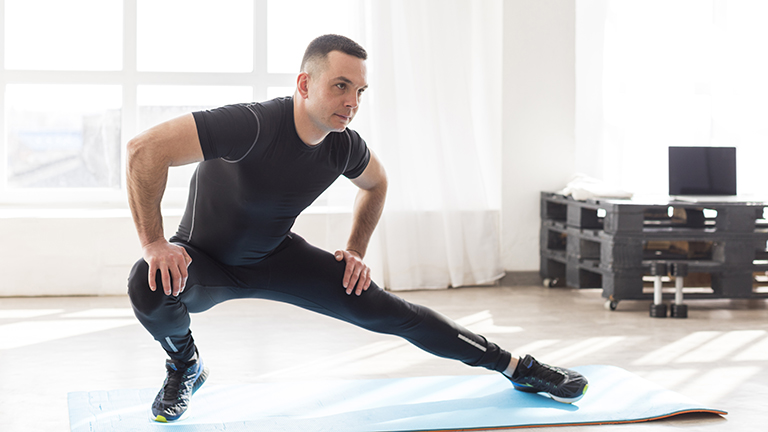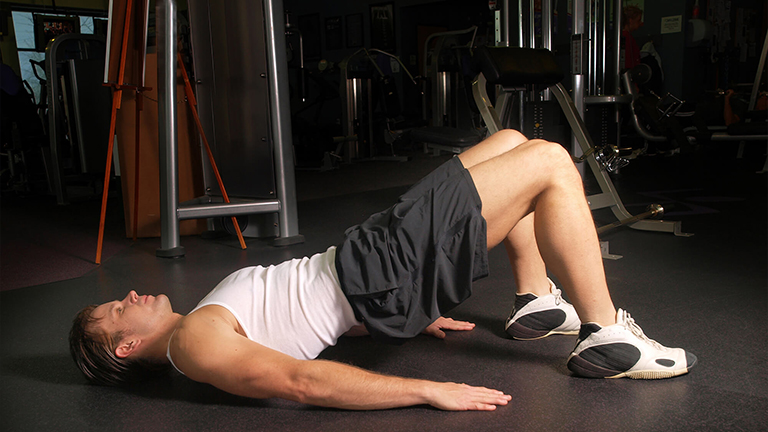Maintaining prostate health is a vital part of men’s overall wellness, especially for men over 40. A healthy prostate supports urinary function, sexual health, and general well being. One of the most effective ways to promote prostate health is through regular exercise, which can improve circulation, strengthen pelvic muscles, and reduce the risk of prostate-related issues. In this article, we’ll explore the best exercises for prostate health at home, lifestyle tips, diet, and preventive strategies designed for global audiences in the USA, UK, Canada, and beyond.
Understanding Prostate Health
What is the Prostate and Why It Matters
The prostate is a small gland located just below the bladder in men. It surrounds the urethra and plays a crucial role in producing seminal fluid. While it’s only about the size of a walnut, the prostate has a significant impact on urinary and sexual health. Over time, the prostate may enlarge, a condition known as benign prostatic hyperplasia (BPH), or in rare cases, develop cancer.
Maintaining a healthy prostate can prevent urinary problems, sexual dysfunction, and enhance quality of life. Exercise is a key factor in supporting the gland’s function and reducing risks.
Common Prostate Problems in Men Over 40
- Enlarged Prostate (BPH): Causes urinary frequency, urgency, and difficulty in urination.
- Prostatitis: Inflammation of the prostate, often due to infection, leading to pain and discomfort.
- Prostate Cancer: A serious condition that requires medical attention but can sometimes be managed alongside preventive lifestyle habits.
Signs Your Prostate Needs Attention
Recognising early signs of prostate issues can help in prevention and timely intervention:
- Frequent urination, especially at night
- Weak urine stream or difficulty starting urination
- Pain during urination or ejaculation
- Blood in urine or semen
If you notice any of these symptoms, it’s crucial to consult a healthcare professional.
[INSERT_ELEMENTOR id=”5108″]
Why Exercise is Key for Prostate Health
How Physical Activity Supports Prostate Function
Exercise promotes overall circulation, strengthens the muscles surrounding the bladder and urethra, and helps regulate hormones such as testosterone, which impacts prostate health. Specific exercises can also alleviate symptoms of BPH and support sexual health by improving blood flow to the pelvic region.
Benefits of Home Workouts vs. Gym Exercises
Exercising at home is convenient and allows men to maintain consistency without needing a gym membership. Home exercises like Kegel exercises, yoga, and body weight movements are highly effective in strengthening pelvic muscles and improving urinary control.
Preventive Health Tips for Men
- Maintain a healthy weight: Obesity is linked to higher prostate risks.
- Stay active daily: Even light exercise like walking or stretching benefits the prostate.
- Include strength training and pelvic exercises in your routine.
- Avoid prolonged sitting, which can reduce circulation in the pelvic region.
Best Exercises for Prostate Health at Home
Here are the most effective exercises men can do at home to support prostate health.
Kegel Exercises for Men
Kegel exercises strengthen the pelvic floor muscles, which support the bladder and prostate. These exercises are highly effective in improving urinary control and sexual function.
How to do Kegels:
- Identify your pelvic floor muscles by stopping urination midstream.
- Contract these muscles and hold for 5-10 seconds.
- Relax for 5 seconds.
- Repeat 10-15 times, three times daily.
Over time, Kegel exercises can reduce symptoms of BPH and improve overall pelvic strength.
Squats and Lunges for Pelvic Strength
Squats and lunges engage the lower body, including the pelvic muscles. Strengthening these areas supports bladder control and prostate function.
How to do squats:
- Stand with feet shoulder-width apart.
- Bend your knees and lower your hips as if sitting in a chair.
- Keep your chest up and back straight.
- Rise slowly and repeat 10-15 times.
Lunges target the thighs and hips, which also benefit the pelvic area. Alternate legs for 10 reps each side.
Bridge Pose and Pelvic Lifts
The bridge pose activates the pelvic floor and glute muscles, improving circulation to the prostate.
How to do a bridge pose:
- Lie on your back with knees bent and feet flat on the floor.
- Lift your hips towards the ceiling while keeping shoulders and feet grounded.
- Hold for 5-10 seconds and slowly lower.
- Repeat 10-12 times.
Yoga Poses to Improve Prostate Function
Yoga enhances flexibility, circulation, and pelvic health. Poses such as cobra, cat-cow, and child’s pose can relieve pelvic tension and support prostate health.
Cobra Pose: Lie face down, press hands into the floor, lift chest gently. Hold for 10 seconds. Repeat 5 times.
Cat-Cow Pose: Alternate arching and rounding your back to stimulate pelvic and lower back muscles. Repeat 10 times.
Aerobic Exercises to Enhance Circulation
Cardio exercises like walking, cycling, or swimming increase blood flow, which is essential for prostate wellness. Aim for 30 minutes daily, five times a week. These exercises help maintain hormone balance and reduce inflammation.
Creating a Daily Prostate-Friendly Exercise Routine
Morning Routine for Prostate Health
- Start with 5-10 minutes of stretching and deep breathing.
- Perform Kegel exercises and pelvic lifts.
- Follow with 10-15 squats or lunges.
- Include yoga poses for flexibility.
- Finish with a brisk walk or light cardio.
How Long and How Often to Exercise
Consistency is key. Daily routines of 20-40 minutes combining strength, pelvic, and aerobic exercises provide the best results. You can gradually increase intensity over time.
Tracking Your Progress
Keep a journal or use a fitness app to track:
- Exercise type and duration
- Frequency of Kegel sets
- Any improvement in urinary function or pelvic strength
Monitoring progress helps maintain motivation and identify what works best.
Diet and Lifestyle Tips to Complement Exercises
Foods That Promote Prostate Health
Nutrition is critical in supporting the prostate:
- Tomatoes: Rich in lycopene, which may reduce prostate cancer risk
- Green tea: Contains antioxidants to combat inflammation
- Cruciferous vegetables: Broccoli, cauliflower, and kale improve detoxification
- Omega-3 rich foods: Salmon, walnuts, and flaxseed reduce inflammation
Hydration and Its Role in Prostate Function
Proper hydration ensures smooth urinary function and helps flush toxins. Aim for 6-8 glasses of water daily, but avoid excessive caffeine and alcohol, which can irritate the bladder.
Lifestyle Habits That Harm the Prostate
- Smoking and alcohol abuse
- Sedentary lifestyle
- Diet high in red meat and processed foods
- Chronic stress
Replacing these habits with healthy routines supports long-term prostate wellness.
When to See a Doctor
Warning Signs You Shouldn’t Ignore
Even with a healthy lifestyle, certain symptoms require professional attention:
- Persistent difficulty urinating
- Blood in urine or semen
- Severe pelvic pain
- Sudden changes in urinary habits
Combining Exercise with Medical Treatment
Exercise complements medical care but is not a substitute for diagnosis or treatment. For men undergoing treatment for BPH or prostate cancer, consulting a physician before starting new exercises is essential.
FAQ:
Q1: What are the best exercises for prostate health at home?
A1: The most effective home exercises include Kegel exercises, squats, lunges, bridge pose, yoga, and aerobic workouts. These exercises strengthen pelvic muscles, improve circulation, and support urinary and sexual health.
Q2: How often should I do prostate exercises?
A2: For optimal results, aim for 20-40 minutes daily, including Kegel sets, strength exercises, and light cardio. Consistency is key for long-term prostate wellness.
Q3: Can exercise prevent prostate enlargement or BPH?
A3: Regular exercise helps maintain hormonal balance, improves pelvic circulation, and supports urinary function, which can reduce the risk of BPH and other prostate issues.
Q4: Are Kegel exercises effective for men over 50?
A4: Yes. Kegel exercises strengthen the pelvic floor, improve bladder control, and are especially beneficial for men over 50 experiencing early signs of prostate problems.
Q5: What lifestyle changes support prostate health alongside exercise?
A5: A prostate-friendly lifestyle includes eating lycopene-rich foods, staying hydrated, avoiding smoking and alcohol, maintaining a healthy weight, and exercising regularly.
Q6: When should I see a doctor for prostate issues?
A6: If you notice difficulty urinating, blood in urine or semen, pelvic pain, or sudden changes in urinary habits, consult a healthcare professional promptly.
Conclusion
Taking care of your prostate doesn’t have to be complicated. By incorporating the best exercises for prostate health at home, alongside a balanced diet, proper hydration, and healthy lifestyle choices, men can significantly improve their prostate function and overall quality of life.
From Kegel exercises and squats to yoga and cardio, the routines outlined here provide a comprehensive approach to prostate wellness. Coupled with regular check-ups, these practices can help prevent common prostate problems and support long-term health.
Investing in your prostate today ensures better urinary control, sexual health, and vitality for years to come.


